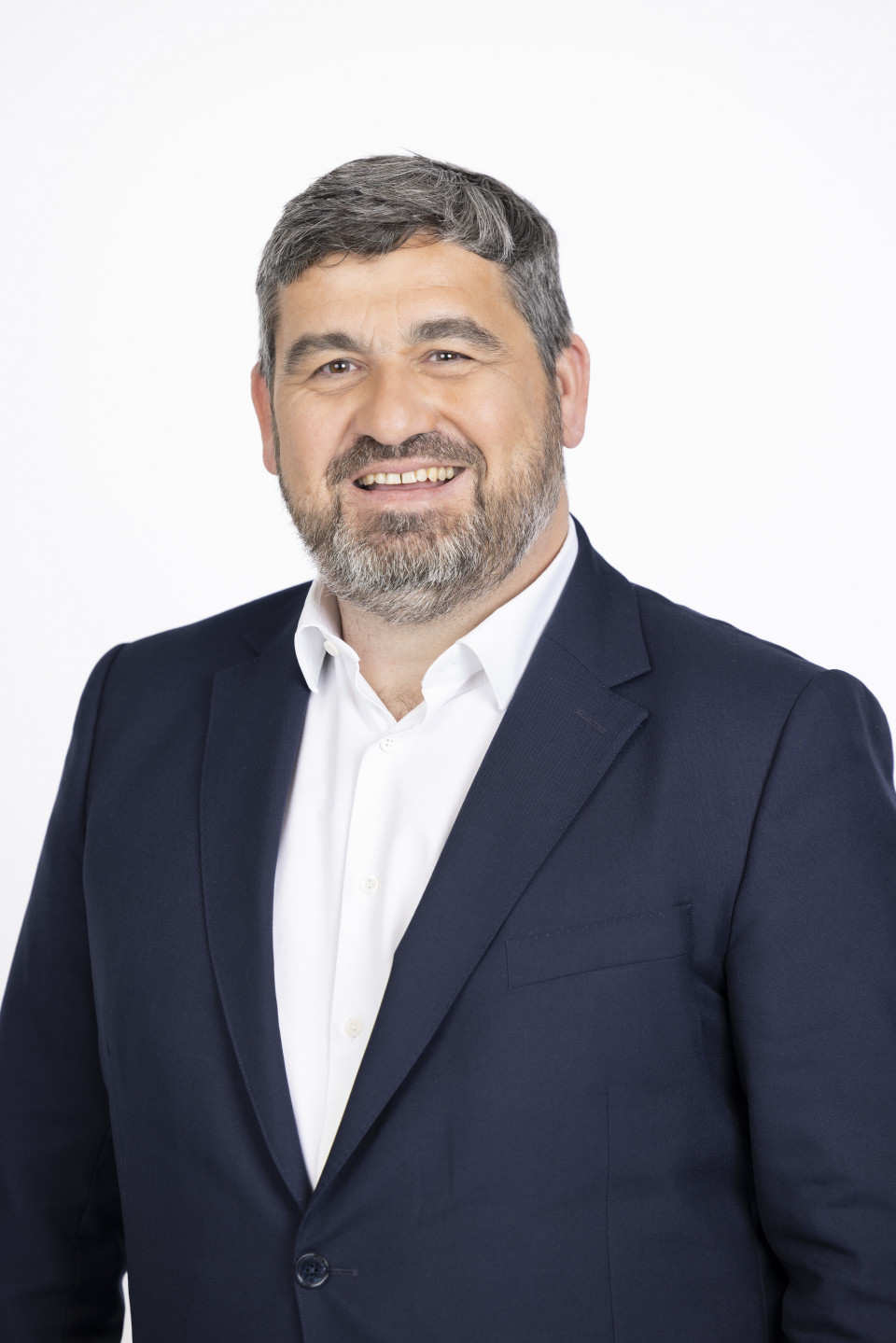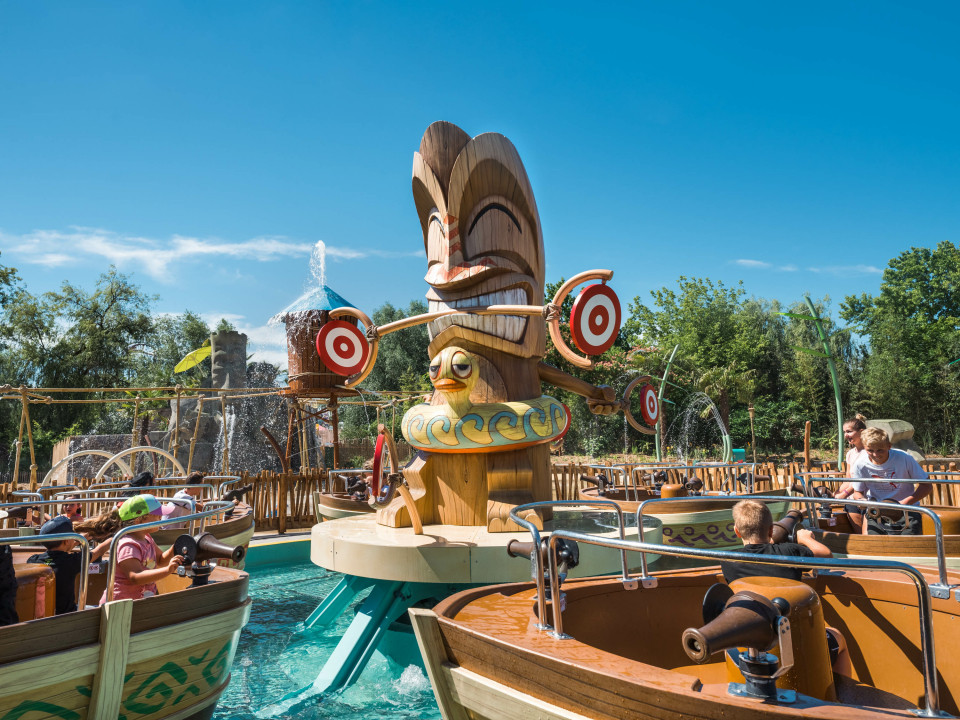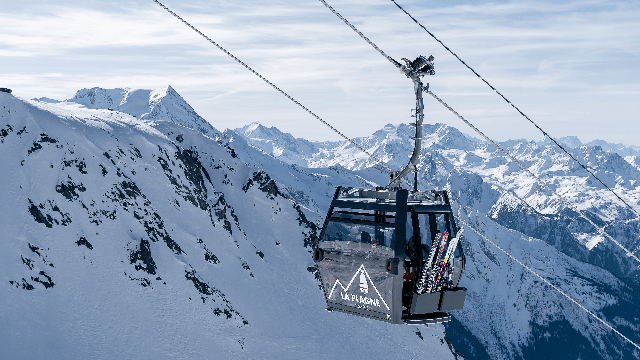“Ecological transformation runs in our DNA”
The Compagnie des Alpes is in rude financial health and boasts enviable environmental performance in both its leisure parks and ski areas where low-carbon snow groomers run on used cooking oil. The architect of this success is Dominique Thillaud who shares some of his secrets with infectious good humor.

Track record
1991 Graduated from ISC Paris Business School
1993 Master’s in Finance, emlyon business school
1997 Vice-President Mergers & Acquisitions, JP Morgan Chase
2002 Head of Corporate Strategy, Investments and Development, SNCF, Managing Director, SNCF Participations
2012 Chairman of the Management Board, Aéroports de la Côte d’Azur
2021 CEO, Compagnie des Alpes
Compagnie des Alpes
Created in 1989, Compagnie des Alpes (CDA) is listed on the Paris Stock Exchange. A key player in the leisure industry in Europe, the CDA operates 10 of the largest ski areas in the French Alps (Les Arcs, Val-d’Isère, La Plagne, Méribel etc.), 12 leisure parks in Europe (Parc Astérix, Futuroscope, the Grévin Museum, Walibi etc.) and 21 mountain hotels and residences. It has a headcount of over 6,300.
The CDA’s five undertakings
- Halt operations in areas which have become unsuitable for skiing due to climate change.
- Continue to abstain from making snow in temperatures above freezing.
- Abandon the use of fossil energy.
- Refrain from proposing any net expansion of a skiing area.
- No longer provide technical assistance to ski resort and/or Snow Dome creation projects which do not rely primarily on natural snow.
The CDA posted record revenue of over €1 million in 2022/23. Is this trend likely to continue?
We enjoyed continued growth following on from an excellent first half-year 2023/24 (€761 M in revenue) despite the heavy rain in the spring and summer in France, Belgium and the Netherlands where our parks are located. In Paris, the Grévin museum was adversely impacted by the Olympic Games. Luckily, we have a high-quality offering.
Will you beat last year’s record?
I love records, there is nothing I like better than a challenge [Laughs]. Every year since 2021 has been better than the last. It is too early to make predictions for the current year. You will have to wait until December when we publish our financial results.
When you took over the CDA in 2021, it had been hard hit by Covid. What did you do to help business pick up again?
Our two activities - ski areas and leisure parks - are all about social interaction and bonding with others: we offer “real-life” leisure experiences. In France, our sector was certainly amongst the hardest hit by the pandemic. When I arrived, revenue stood at... zero. We applied strict cost control while investing heavily to upgrade our products - even when we didn’t have any money coming in - so as to offer our customers the best possible experience. The strategy paid off in the post-Covid period when life returned to normal boosted by people’s increased desire for social contact and outdoor leisure activities. To give you a rough idea, our annual investments represented €200 M in 2021 and 2022 and were slightly higher in 2023 and 2024. Investments are shared 50/50 between our two activities, which we consider equally important. In fact, in 2022, revenue from the leisure parks outstripped that of the ski resorts for the first time in the company’s history.
You have also been impacted by the sudden rise in electricity costs. Is the energy crisis over now?
The cost of electricity rose almost six-fold in 2022. As our activities require electricity, this crisis affected our profits, but we were able to maintain our profit margin thanks to rigorous management. Prices are more reasonable now, but we will never return to the pre-crisis price level. The CDA purchased electricity for a number of years to ensure coverage. 80% of the electricity requirements of our parks and 20% of our ski areas are currently covered by the ARENH (Regulated Access to Incumbent Nuclear Electricity) tariff so we are gearing up for 2026 when this will have expired by ramping up self-production, in particular, by installing photovoltaic panels and shades on our sites.
Is it possible to reconcile energy transition and winter sports?
Yes! Since 2021, the CDA has earmarked investments to achieve net-zero emissions for scopes 1 and 2 on each site. We don’t make use of carbon offsets: they are akin to indulgences in the Middle Ages! [Laughs]. I refuse to have any part of it. We have already made progress. In 2021, a skier-day generated 1.4 kg CO2e1 for scopes 1 and 2. In 2023, this figure dropped to 300 g CO2e – the equivalent of producing a kilo of apples. We have worked on a solution created by Finnish energy provider NESTE: for example, we recover used cooking oil from the leisure parks to use as HVO fuel for groomers and buses in Val d’Isère. CO2 emissions have been slashed by 93%, the vehicles work fine and don’t reek of fries! [Laughs]
Why is this solution not more widely used?
We were the first to make use of it in the mountains and others are starting to follow suit. Obviously, it is not cheap: HVO fuel costs 10 cents a liter more than diesel, and we do not receive any subsidies. You really need to be motivated to adopt this system. With current technology, we know that it is possible to reduce the emissions of a skier-day to 45 g CO2e. We signed a tripartite agreement with the French National Forestry Agency and the municipalities concerned to plant trees in the areas where our sites are located. In five years’ time, they will have been able to capture the remaining 45 g CO2.
How are the CDA’s CSR commitments made tangible?
Ecological transformation runs in our DNA. We have been carrying out dual reporting since 2021: expressing our results in both CO2 and Euros. This dual accounting is verified by auditors. Our bank loans and the bonuses paid out to our executives are index-linked to our CO2 and workplace safety performance; everyone is on board with the collective project. Under our ecological transition plan, we will invest €54 M over the next ten years to reach net-zero; it will start paying off in the 11th year. We have also been working on our corporate purpose, announcing five undertakings for the climate (see box) and made a further 10 commitments. I feel particularly strongly about one of them: every year we distribute 30 shares to all employees who have been with the company two years and who undertake to stay for at least two more years. Given that our business employs a lot of seasonal staff, it is a rather unusual lever to foster loyalty and share the value created.
Global warming represents a threat to your skiing areas in the future. How can you reinvent them?
The ski resorts run by the CDA tend to be located at high altitude. Our climate model, based on our own algorithms, does not foresee any particular difficulties. We have a very long-term vision: we reply to tenders for public service concessions and carefully check the climate profile of the sites in which we invest as our equipment has a lifespan of 40 to 50 years. The areas at lower altitude are, however, concerned by the problem and will ultimately be equipped with cable cars to reach the skiing area. It will no longer be possible to ski back down. I would like to take advantage of this opportunity to debunk a myth: natural snow will never be replaced by artificial snow for the simple reason that it is made at a temperature of between -4 and -15 °C so will be the first victim of global warming.
Our two activities - ski areas and leisure parks - are all about social interaction and bonding with others: we offer “real-life” leisure experiences.
What is your strategy regarding your leisure parks?
They don’t have an issue with snow, but rain is another matter! [Laughs] The aim is to extend their opening periods and offer more varied experiences to visitors of all ages. We want to continue to offer surprises, to innovate while guaranteeing safety. Our parks are increasingly benefiting from add-on immersive accommodation experiences such as Station Cosmos or Ecolodgee hotels at the Futuroscope, the Quais de Lutèce hotel at Parc Astérix or the bungalows at Walibi Holland.

Why did you buy Urban Soccer and Urban Padel in June?
Urban Soccer and Urban Padel operate 35 centers attended by 4 million players a year: they are the leaders in the French market which is still lacking in facilities. Our intention is to double the number. The sports on offer address people who enjoy playing football and racket sports and are perfectly aligned with our strategy of offering real-life leisure while fostering social interaction. The players who go to these centers have similar profiles to skiers and visitors to our leisure parks. For the CDA, it’s an extension to our existing range with potential synergies: we are moving from one-off or occasional leisure activities to a more linear consumption. For information for emlyon students: a center is opening in Lyon Dardilly in the spring.
How are you getting ready for the 2030 Winter Olympics in the French Alps?
We are supporting the project which has been declared sustainable. Unlike the Albertville Games where everything was concentrated in the same valley, the 2030 Games will be spread all over the Alps. Some competitions will be taking place on our sites: alpine skiing in Serre Chevallier and Méribel which has already successfully hosted a large-scale event with the 2023 World Championships, bobsleigh at La Plagne and Val-d’Isère might feature too. Usually, the benefits are excellent in terms of image for the resorts, but they can see their visitor numbers drop during the competitions. In any case, it is the Olympic Committee which is organizing the Games, not us. There is sufficient time to install the sporting amenities but if the stakeholders want to take a quantum leap in improving rail access, then decisions will have to be taken this winter at the latest if everything is to be ready by the end of 2029. I believe that is one of the main issues. The RN 90 highway was built for the Albertville Games but now it’s the train’s turn.
We have been carrying out dual reporting since 2021: expressing our results in both CO2 and Euros. This dual accounting is verified by auditors.
Before working in the leisure sector, you had a career in finance and then transport (French Railways, airports)? That’s quite a change!
Not really, these jobs have quite a lot in common. Even when working in corporate banking, I specialized in industries with long investment cycles, with medium to long-term profitability. What’s more, transport and leisure are two areas where you need to handle flows - passengers, visitors or skiers - while juggling with very short-term B to C, B to B and very long-term B to G2 issues.
Is it complicated dealing with B to G?
It can be complex but not complicated. Mayors, regional councilors and MPs don’t have the same concerns: they need to be reconciled for the common good. Not forgetting, of course, to also defend the interests of your organization.
Do you enjoy skiing? If so, what is your favorite ski resort? Do you have any other hobbies?
I love skiing. I don’t have that much opportunity to ski despite spending a lot of time in resorts in the winter, but it is for work. My job entails spreading happiness and creating conditions conducive to happy memories for people who have come to relax; it’s great. As for my favorite resort, it’s like asking me which of my children I prefer, I love them all equally! [Laughs] Otherwise, I am a diving instructor. It used to be my passion. In fact, in Tignes, you can dive under the lake when it is frozen, but I have never tried. I prefer slightly warmer water!
You are an old student of emlyon. What do you remember from your time there?
It was great. I took a Master’s in Financial Engineering. It was a life-changing experience which opened up new horizons. I liked the mix of professors and outside lecturers in classes, it is a real accelerator. But I do take exception to the term “old”, I am not an old student, I’m an alumnus [Laughs].
1-CO2e: CO2 equivalent.
2-Business to Government, with public authorities.

Comments0
Please log in to see or add a comment
Suggested Articles



